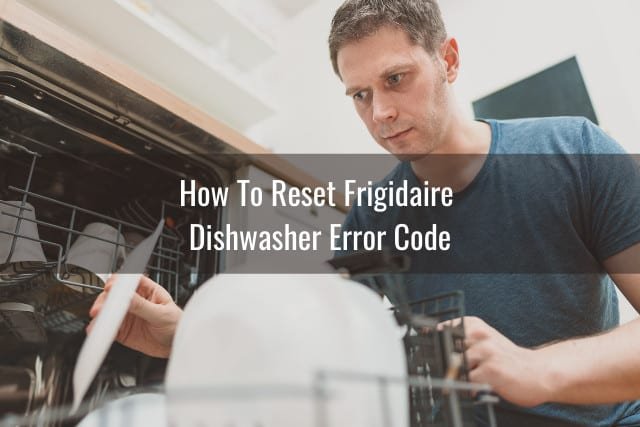
Imagine your dishwasher as an orchestra playing a symphony of cleaning prowess. Each part—water inlets, spray arms, and pumps—must function in perfect harmony. When one part isn’t working well, the whole performance suffers, and Error Code E1 is the dishwasher’s way of letting you know the water level sensor isn’t quite performing its solo properly. Fortunately, resetting the washer and addressing this issue isn’t as daunting as assembling a piece of flat-pack furniture. Let’s dive in and get your dishwasher back to its sparkling best!
Understanding Error Code E1
Before we fix the problem, it’s essential to understand what Error Code E1 is all about. In the simplest terms, this code usually relates to a problem with the water inlet. Think of it as if you were trying to fill a bathtub with the drain open. If the water can’t reach the level it needs to, your dishwasher isn’t going to clean effectively.
The most common cause of Error Code E1 is an issue with the water supply. It could be something as straightforward as a kinked water hose or as subtle as a partially clogged inlet valve. Imagine trying to drink through a straw that’s pinched; not much liquid is getting through, right? It’s the same scenario here, but fortunately, you don’t need a toolkit just yet. Sometimes, simply resetting the dishwasher will do the trick.
But why reset it, you ask? Think of your dishwasher like a computer. When it glitches or stalls, a reboot often clears the temporary issues. Resetting your Frigidaire dishwasher can clear minor glitches and get all parts communicating harmoniously again. If the issue persists, it might be a deeper mechanical issue, but let’s not jump the gun yet. Resetting is often an easy place to start.
How to Reset Your Frigidaire Dishwasher
Alright, here’s the deal: resetting your dishwasher is typically the simplest way to clear Error Code E1. This process is akin to giving your car’s engine a quick restart or rebooting your smartphone when it’s acting up. It clears out any temporary glitches and can restore your appliance’s functionality.
To begin, locate the power button on your dishwasher—usually found on the control panel. Depending on your model, you might see buttons labeled “Cancel” or “Start/Stop.” Press and hold the “Cancel” or “Start/Stop” button for about 3 to 5 seconds. This stops the current cycle and clears the settings. After releasing the button, give it a moment to reset.
Next, unplug your dishwasher from the power outlet. If the plug is tricky to reach, you can also turn off the power at the circuit breaker. This step is similar to switching off your entire computer to let it cool off and reset before booting it back up. After about 5 minutes, restore the power to your dishwasher. This brief pause allows the appliance’s internal systems to reset entirely.
Finally, once you’ve plugged it back in or flipped the circuit breaker, try to run a short wash cycle. This test cycle lets you see if the Error Code E1 has cleared. If the dishwasher works fine without displaying the error message, congratulations! You’ve successfully reset it. If the error persists, don’t fret. You might need to investigate further or consider a service call, but let’s look at other troubleshooting tips first.
Troubleshooting and Prevention Tips
If resetting didn’t do the trick, here are some additional steps you might consider. First, check the water supply line. Ensure that the hose is not twisted or pinched, and that the valve is open—like ensuring the garden hose isn’t knotted when you’re trying to water the plants. A simple straightening or adjustment can sometimes resolve the water flow issue leading to Error Code E1.
Next, inspect the water inlet valve. It’s the gatekeeper allowing water into the dishwasher. If it’s clogged or malfunctioning, think of it like a kitchen faucet clogged with sediment. Sometimes cleaning can help, but if it’s significantly damaged, replacement might be needed. Cleaning involves turning off the water supply, removing the valve, and gently clearing any debris.
Regular maintenance can prevent these hiccups. Consider routinely checking hoses for wear and tear and keeping them straight and free from obstruction. Softening hard water by using dishwasher-friendly solutions can also prevent clogging in the future. Remember, just like you wouldn’t drive your car for years without a trip to the mechanic, your dishwasher thrives on a little TLC too. Document each step you take and the results, as this helps in troubleshooting more effectively or communicating the issue with professionals if further assistance is needed.
By following these steps, you arm yourself with the know-how to tackle Error Code E1 like a pro. You don’t have to be a tech guru to solve this problem, just someone armed with a bit of patience and a willingness to troubleshoot. With these tips up your sleeve, you’ll be back to enjoying clean dishes in no time, no error codes in sight!